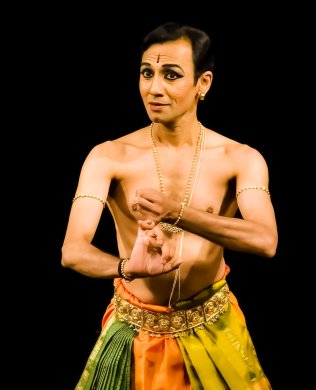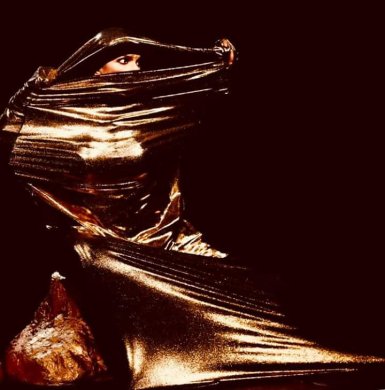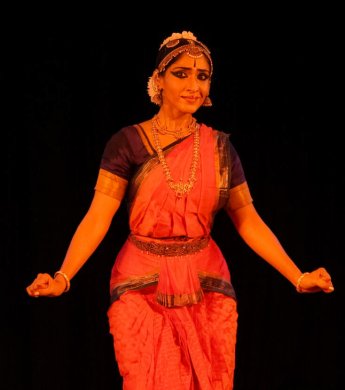
|   |

|   |
About last Season - Jitendra Krishna e-mail: sathirdance@gmail.com January 23, 2018 A Season's ending Another Chennai Margazhi season of music and dance has come to an end. I haven't missed attending this festival for the last 30 years or so. Over the years I've made many 'season friends' from all over the world. Rasikas who travel to Chennai every December and January to soak in the dances of India. The season seems to be ever expanding. Each year more performances, more conferences, more lectures, more talks, more, more, more of everything! The performances are also getting louder and louder - literally. During dance shows, the mridangam and nattuvangam are often amplified so much so that the performance becomes a percussion concert instead of a dance concert. Chatterboxes As if two weren't enough, we now have three dance conferences. The Natya Darshan, Natya Kala and the new Navadisha conference. The Music Academy has also added three mornings of talks at the crack of dawn. That's thirteen days of conference! Yes, we love to talk endlessly about dance... Do all these conferences have to happen all at once in the season? If yes, more careful planning is certainly needed. Why have the sessions at the Music Academy which ends right before the start of the morning performances? Half of the audience, including myself, walk out before the talks are over. At 90 minutes, each session with four seasoned dancers, who naturally have much to share, is too ambitious. Just having two speakers with a moderator, who makes sure the speakers do not divert or digress from the topic, would certainly work better. The Natya Kala Conference 2017 was so well planned that I found it impossible to skip even one of the five-day conference. The conference, which celebrated sringara in all its glory, had interesting (barring a few), well attended sessions. You can watch the sessions online. Lakshmi Viswanathan's session on 'Wit and Humour in the World of Sringaram' was certainly one that stood out. That brings me to the Music Academy Dance Festival. This year was the twelfth edition, with Lakshmi Viswanathan receiving the Nritya Kalanidhi Award - a well deserved award. What would have been even more wonderful is to have had Ms. Viswanathan perform at the Music Academy Dance Festival. For someone who has been to this festival ever since its inception in 2007, the festival has become rather tiring. Margam after margam, especially at the morning performances. Every dance season, I have many conversations with rasikas attending from all over the world, to understand how they experience the season. In the last few years, many of these rasikas (the ones that buy festival tickets), have felt as if they were watching the same dance festival over and over again. Every edition was with a bit of reshuffling: one or two out and few others in. There is hardly any element of surprise in the programme. Wouldn't it be interesting (for the audience) to reshuffle the line-up some more? For instance, keep the 10am slot for younger dancers, and program the 11:30am slot with a more varied line-up of performances, with a mix of younger and seasoned dancers, such as, having Lakshmi Viswanathan present her Wit and Humour in the World of Sringaram as a full-length performance. Have a Bragha Bessell with Padams and Javalis, and Vidhya Subramanian with a performance series of Ashtapadis, just to name a few. A mix - but still Bharatanatyam. And what about adding some other contemporary Indian dance? Dance of the Season The season had many dance shows. Of the about 85 dance performances I saw between December 10, 2017 up to January 10, 2018, I've picked out and mention just a few good shows, which made an impression, not only on me but also on the rasikas I spoke to during the season. This is not a complete report of the performances and is not in any particular order. Praveen Kumar Seen: December 19, 2017 @ Krishna Gana Sabha and January 4, 2018 @ The Music Academy Madras.  Photo: Suresh Murleedharan Praveen Kumar has been consistently performing solo Bharatanatyam of high quality - with organic thought-out approach to choreography, sans any gimmicks, glamour or glitter. His subtle but layered abhinaya speaks volumes and he clearly relates deeply to the pieces he chooses to perform. Where would any Bharatanatyam artist be without musicians? Although Praveen's orchestra is seated at the usual wing side of the stage, they can be said to truly dance along with Praveen. To have D.V. Srivatsa sing the challenging Khanda Ata varnam sarasijanābha, focussed solely on the dancer rather than on a bunch of notes, shows how completely invested the singer is in the outcome of the performance. This is also so for the other excellent musicians, D.V. Prasanna, Lingaraju, Mahesh Swamy and Mandya Nagaraj. There is a powerful link between emotions, poetry, music, dance, musicians and the dancer, which elevates Praveen's dance to excellence. Although many who watch him dance experience this, Praveen Kumar himself is very unassuming of his own excellence in the art of Bharatanatyam. Anita Ratnam in 'AHalya' (as part of AH SU RA) Seen: AHalya/STONE by Dr. Anita Ratnam with collaborator, Dr. Hari Krishnan ; Costume Design by Rex and fabricated by Prabha Narasimhan; Set design by Victor Paulraj ; Sound Design by Vedanth Bharadwaj December 28, 2017 @Krishna Gana Sabha  Photo: Ganesh Ramalingam Dr. Anita Ratnam presented for the season at the Krishna Gana Sabha. The performance was a triptych by Anita Ratnam with AHalya, Sharmila Biswas with SUrpanakha and Geeta Chandran with RAvana (AH SU RA). Since this is not a review of the performances my focus is on Ms. Ratnam's presentation. This is my focus largely because interdisciplinary performance art is, unfortunately, not often part of the dance season. With the creation of 'AHalya/STONE', Anita Ratnam has her fingertips perfectly on the pulse of current happenings around the world. The centuries old story of Ahalya is retold in an impressive futuristic setting, and it is carefully connected to current happenings around the world. The hashtag, #metoo, the harassment of women, and gender equality is boldly narrated through dance, music, voice-over, costuming, sound, light and set design. Although Ms. Ratnam used the story of Ahalya, along the way the presentation also transcended into a very personal story of desires, and a woman's right to it. For most of the performance, the dancer was completely covered in a golden sheet, as Ahalya was cursed to be turned into stone, and subsequently freed her enslaved soul. The movement vocabulary, which the dancer used to 'free' herself was particularly intriguing to watch: it made me wonder what inspired the dance movement; that is, what came first, the golden costume or the dance? The multi-layered presentation can certainly work as a solo performance if it is developed further. The production values are of international appeal, and I can see it presented as a solo performance at festivals around the world. Watching AHalya also brought flashbacks of when I saw Eve Ensler's episodic play, The Vagina Monologues for the first time Off-Broadway in New York in 2000. I often wondered how to adapt such stories into dance performance with a relevant Indian context. With the dance creation 'AHalya/STONE', Anita Ratnam has done exactly that. Although many new dance productions are first seen in Chennai, I always think we get to see a work in progress or a try-out, if you will - even if it is labelled a première. This poses a great challenge for an artist, the challenge of somehow getting it all right at the very first presentation, without at least two or three try-outs. The production AHalya/Stone was the most unexpected and the most daring performance of the season. Hopefully, we will get to see it in Chennai again. Jyotsna Jagannathan Seen: December 24, 2017 @ Narada Gana Sabha and January 2, 2018 @ Kartik Fine Arts, Bharatiya Vidya Bhavan  Photo: Sindhu Ramachandran Jyotsna Jagannathan is a dancer whose performance I have been following carefully, especially since the last few years while she is under the mentorship of Malavika Sarukkai. I am a bit sceptical and concerned about this new trend of 'mentoring' in Bharatanatyam. Most of it seems nothing more than turning the mentee into a clone of the mentor. I had the same concern for Jyotsna, but especially the last two dance seasons she has turned into a solid performer with a strong voice of her own. This season I watched two margams of Jyotsna, and in both, the opening dance was a Mallari (ghambeeranatai, adi) of the late Bhagavatula Seetharama Sharma, and set to dance by Malavika Sarukkai. In both instances, while dancing the choreography of her mentor, Jyotsna, nevertheless, made the dance her own. The opening dance gave a clear guideline for collaboration between mentor and mentee: Dance the choreography of the mentor but do not imitate the mentor. The other pieces, especially in the varnam, "Moham aginen inda velaiyil" choreographed by Jyotsna, the bar is set high as well, with minute attention to building the narrative. Jyotsna Jagannathan is a strong, expressive and sensitive dancer on a journey of self-discovery, on a journey to excel in dance. Mediocrity over excellence? The outpouring of endless dance performances during December and January is worrisome. It's understandable that those who study Bharatanatyam at some point want to showcase it in the Chennai season. But the amateur (often mediocre) dancer is billed, without any distinction, alongside the professional artist who has committed her or his life to dance. For many rasikas (especially those coming from other places) it is almost impossible, from merely reviewing the programme listing, to differentiate between the amateur and professional, between mediocre, good or excellent, and decide which dancer to choose and watch. The noise on social media outlets is getting louder and louder; it's difficult to filter out quality dance performances. I know of quite a few younger dancers who aim to excel in Bharatanatyam through the work they present. But how are rasikas to know about this work? During the season when you open the morning paper, it is just a page with a collection of names of dancers, performing that evening at the various theatres. How are rasikas supposed to know where to go? Those who gravitate (or try to) towards excellence in dance are not much seen or heard. Not on social media and certainly not in printed and online publications. Interviews with younger artists about their artistry, or their thoughts on crafting dance ideas are sparse. Dance conferences need more solution sessions. How are young professionals to elevate their dance to excellence, while they face the economic impracticality of performance as a profession? How do we tackle dwindling audiences? How do we convince audiences to pay entry tickets to experience art? These are pressing challenges the next generation of professional dancers face. Jitendra Krishna | Sathir Dance Art, Chennai-Amsterdam. |